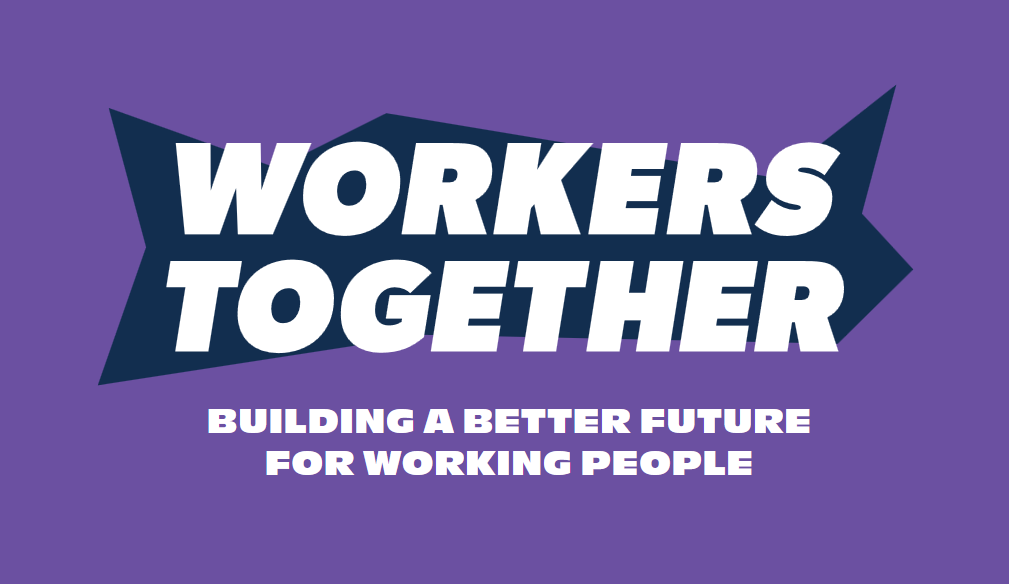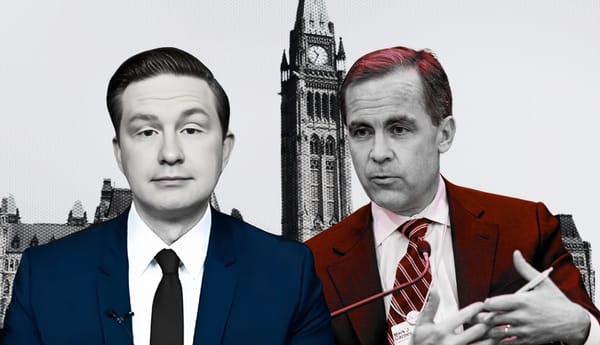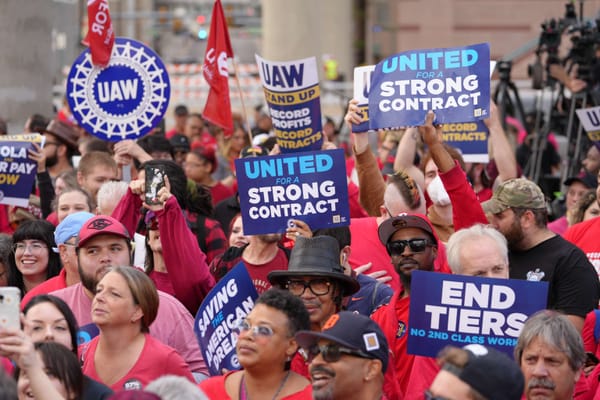
Election 44 has come and gone. We have another Liberal minority government, as predicted.
I thought this might be an appropriate time to reflect a bit on our undemocratic, “first-past-the-post” (FPTP) voting system, where winners are chosen based on geographic riding elections. FPTP is referred to as “winner-take-all” because those whose preferred candidate doesn’t win in their riding effectively have no representation in government. This describes the situation for huge numbers of people across this country.
As is widely understood, under FPTP the popular vote is very poorly reflected in the number of seats each party wins. This is true federally as well as provincially. In the worst case scenario, FPTP can award majority governments to parties with far less than a majority of votes (Premier Doug Ford’s Conservative government in Ontario is a case in point). Even when no party wins a majority of seats, as just happened in this federal election, the seat totals of minority governments often don’t reflect their vote shares.
Let’s look at how this played out in this election.
Federal Election 2021 Results: Liberal Minority Government
| Party | LPC | CPC | NDP | BQ | PPC | GPC | Other |
| Vote Share | 32.2% | 34% | 17.7% | 7.7% | 5.1% | 2.3% | 0.9% |
| Seats | 158 | 119 | 25 | 34 | 0 | 2 | 0 |
| Seat Share | 46.7% | 35.2% | 7.4% | 10% | 0% | 0.6% | 0% |
*Percentages do not total to 100 due to still uncounted votes
In this election, the Liberals won 32.2 per cent of the national popular vote but will have 46.7 per cent of the seats in the 44th Parliament. Relative to other parties, the Conservatives’ number of seats will be most reflective of their share of the vote: 35.2 per cent of seats for 34 per cent of the vote. The NDP, with 17.7 per cent of the popular vote but only 7.4 per cent of the seats, is the most disadvantaged by the FPTP seat allocation.
Because of its geographic concentration in Quebec, the Bloc Québécois (BQ) gets a minor boost: 10 per cent of House seats for 7.7 per cent of the vote. The People’s Party of Canada (PPC) will have no sitting MPs, despite winning 5.1 per cent of the popular vote (I suppose we can’t be too upset about this). Last, although the Green Party managed to eke out 2.3 per cent of the national vote, its two MPs will represent just 0.6 per cent of the seats in the House of Commons.
Such results are typical. Radio Canada performed a similar exercise for the 2019 federal election. Just as in this election, the Liberals lost the popular vote to the Conservatives, 33.1 to 34.4 per cent. The Liberals nevertheless formed a virtually identical minority government with 157 of 338 (or 47 per cent) of the seats in the House of Commons. If seats had been allocated according to the popular vote, the Liberals would have been reduced to 112 seats while the Conservatives would have gone from 121 to 117 seats — an admittedly unfortunate outcome.
Our FPTP, winner-take-all system reproduces these undemocratic and non-representative outcomes every election. Yet it’s been very difficult to get electoral reform on the agenda. Past refendra to change the way we vote have failed, even though polling suggests that people largely agree seats should reflect votes.
One reason meaningful electoral reform is difficult to achieve is that winner-take-all voting systems like ours favour established parties. FPTP also has a natural tendency to produce only two major contending parties. Because only one “winner” per electoral riding is permitted, voters who would prefer a third or fourth ranked candidate or party risk “wasting” their vote. This incentivizes “strategic voting,” as voters frequently vote against the candidate they don’t want rather than for the one they do want.
Regional specificities — particularly in a country as geographically, economically and culturally diverse as Canada — allow for parties outside of the two main national parties, the Liberals and Conservatives. However, even these regional differences are often about swapping who the two main contenders are. For example, in more progressive ridings the contest is frequently between the Liberals and NDP. In Quebec, it’s a contest between the Bloc and the Liberals.
On the other hand, there are “regional sweeps,” where a single party ends up winning all or a huge majority of seats. Western Canada is currently a sea of blue, despite pluralities of voters not voting Conservative. In Alberta’s 2019 federal election, for example, roughly 30 per cent of the population chose candidates other than Conservatives — none of these people had representation in Parliament.
Indeed, the last true federal majority was Brian Mulroney’s government in 1984. Though again, it was only a “majority” in the sense that the governing party actually won a razor thin majority of the national popular vote. Their share of the vote in no way corresponded to their seat allotment in the House of Commons, as they wound up with 75 per cent of the seats.
Proportional Representation
A system of proportional representation (PR), where seats reflect vote shares, would be a progressive reform to our democracy. Aside from the technical issues involved in translating votes to seats, PR would likely have a number of progressive social and economic outcomes. For example, PR is correlated with higher voter turnout, more women and minorities elected to government, policies closer to the views of the median voter, and relatedly, higher levels of social and economic equality.
When people believe their votes can actually have an impact on the composition of government, they’re more likely to participate in elections. This is especially true for younger people, who tend to hold more egalitarian political positions and therefore vote for more left-leaning parties and candidates. The same goes for low-income and other marginalized voters. Proportional representation could also be a boost for the labour movement, as the NDP would stand to benefit from PR and could therefore provide a stronger parliamentary voice for labour, both federally and provincially.
How would PR have changed the current federal election outcome? Let’s compare what FPTP gave us to what a system of fully proportional representation would have.
First-Past-The-Post vs. Proportional Representation in the 2021 Election
| Party | FPTP | PR |
| LPC | 158 | 109 |
| CPC | 119 | 115 |
| NDP | 25 | 60 |
| BQ | 34 | 26 |
| GPC | 2 | 8 |
| PPC | 0 | 17 |
| Other | 0 | 3 |
| Total: | 338 | 338 |
As you can see, the House of Commons would look quite a bit different under PR. For those on the left, the 35 seat increase for the NDP is the most notable difference. As I mentioned, the NDP is the most disadvantaged federal party under FPTP because its voters are the least geographically concentrated. The Green Party would as well gain under PR, going from two to eight seats.
Unfortunately, the PPC would wind up with 17 MPs under PR. An organized left would have to contend with this political risk. Proportional representation aids small parties, whether of the left or the right. What the PPC might actually accomplish with 17 MPs is hard to say, particularly with the Conservatives holding the most seats. But with the Liberals still holding 109 seats and the NDP with 60, there’s a good chance that the PPC’s most regressive proposals would be checked. The larger risks might involve immigration or cultural issues where the PPC could potentially find enough Conservative and BQ allies to push through pieces of their reactionary agenda.
Under PR, the Liberals and Conservatives would both see their seat totals reduced, the former by 49 and the latter by 4 seats. This is further evidence why the two major parties don’t support PR, and why the Trudeau Liberals have walked back their previous commitment to some type of electoral reform. Both parties benefit from the current FPTP system.
What are the prospects for PR or electoral reform going forward?
Before the last Parliament ended, the Liberals, NDP and Bloc Québecois members of the Procedure and House Affairs Committee voted in favour of NDP Democratic Reform Critic Daniel Blaikie’s motion to create a National Citizens’ Assembly on Electoral Reform. Although the motion passed 7 to 4, with the Conservative committee members voting “no,” this motion will have to be reintroduced after the new government begins.
Advocates want such an “Assembly” to be non-partisan to ensure its recommendations don’t simply follow any party’s line on electoral reform. However progressive its proposals might be though, we must remember that the Liberals have previously reneged on promises to end FPTP — and they are far from friends of PR.
Liberals have flirted with the idea of “ranked ballots,” where voters choose first, second and third candidates. In some countries and jurisdictions, the same principle takes the form of election rounds or “run-off” elections, in which case the top candidates in a first round then move on to the second round. Voters whose candidate was eliminated in the first round can then “choose” between whomever is left.
Ranked ballots and run-off elections basically operate with the same principle in mind: they are a tool used to correct for the fact that winner-take-all voting systems with more than two options produce “winners” who didn’t get a majority of votes. “Ranking” or choosing your second preferred candidate or party is meant to provide a semblance of democratic legitimacy and ensure the winning candidate or party achieved 50 per cent plus one of the votes.
However, ranked ballots and run-off elections are not alternative voting systems. Rather, they are tools that can be used under winner-take-all or PR voting systems, mostly the former. Ranked ballots still necessitate strategic voting, and therefore deny representation to all voters whose preferred candidate or party doesn’t win locally.
Ranked voting therefore doesn’t ensure that voters’ primary political preferences are reflected in the composition of government.
Moreover, it’s unsurprising that ranked voting is the preferred voting reform of centrist parties like the Liberals. Centrists are the primary beneficiaries of ranked ballots, as they are of all electoral systems that encourage strategic voting. Voters on the left are likely to rank centrists second in order to prevent right-wing candidates from winning. Right-wingers will probably do the same to check the left.
In some cases, those “second choice” votes for centrists could in fact distort voting outcomes even more than our current system does. For example, in 1997 the Liberals won 51 per cent of the seats in Parliament with only 38 per cent of the vote. A study of voter preferences after that election showed that had ranked voting existed, the Liberals would have won 57 per cent of the seats.
I performed the above PR experiment with national vote shares. For constitutional reasons, PR in Canada would need to take provincial (or “regional”) shares as the basis for seat allocations, unfortunately. Others have come up with ways to do this that protect the objective of proportionality.
There are also various forms of “mixed-member PR” systems which aim to increase proportionality while maintaining local or regional representation to varying degrees. One model, for example, would have voters vote twice, once to choose a candidate in their riding and once for the party of their choice. Seats would then be split between constituency MPs elected as they are now, with the remaining seats awarded to each party according to the popular vote. In other cases, the “party lists” for selecting candidates under PR would be regionally specific.
The details of the various models aren’t all that important here — and in fact I would argue that many of them get so complicated that they are unlikely to generate voter support. Insofar as they would increase proportionality, however, they would be positive developments.
The closer we can push toward full proportional representation the better, particularly for those on the left who are most disadvantaged by our current undemocratic FPTP system.







